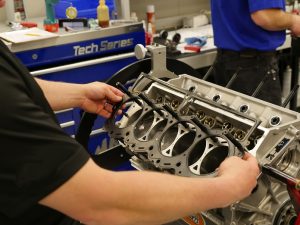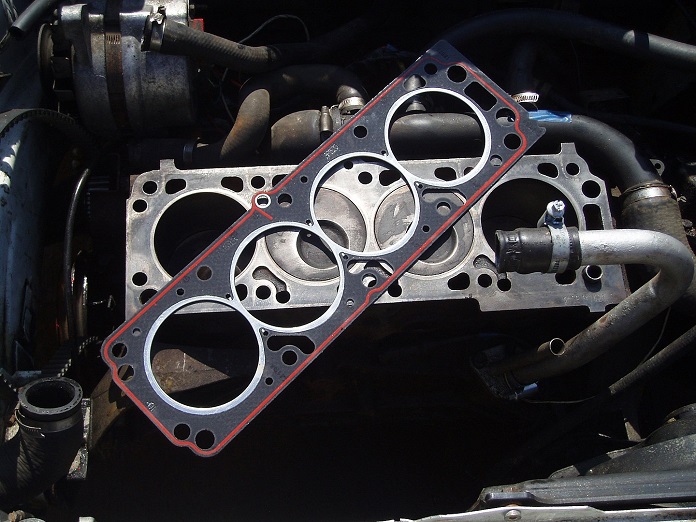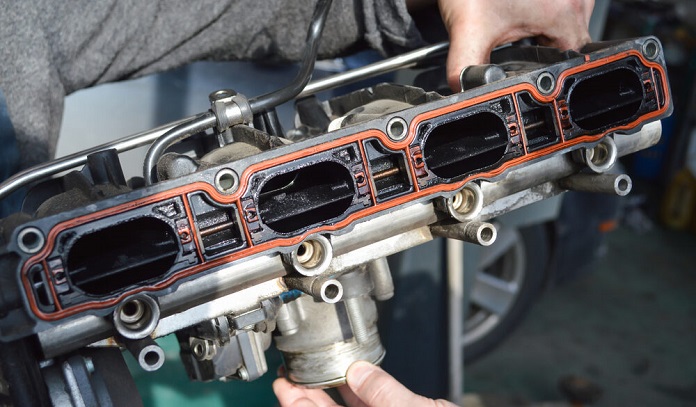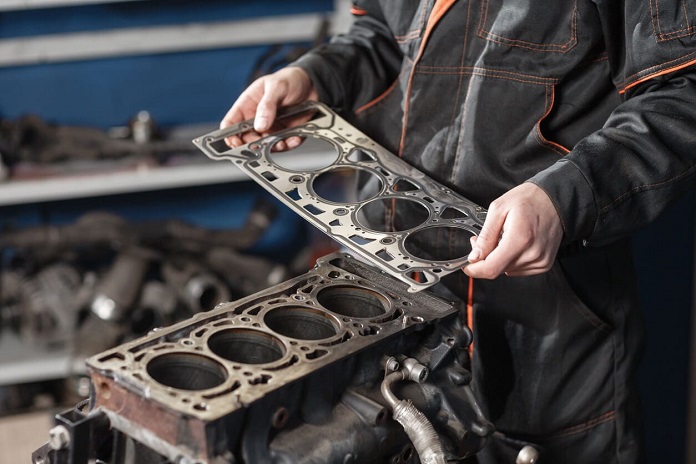
For most engine builders, the quest for more horsepower is an endless pursuit. The fact though, is that building an engine that’ll produce a mountain of horsepower really isn’t all that difficult. Building an engine that can produce all that power reliably is the real trick. That’s why first and foremost, reliability begins with ensuring that it isn’t leaking, dripping, or sputtering its heart out from the moment it’s started.
On a high-performance engine, these are more than just hallmarks of a shaky build, though. They’re tell-tale signs of major component fit issues which, along with lost compression and overheating, are indicators that engine failure is imminent. With a healthy list of high-performance engines parts in the balance, here’s where an ounce of prevention will easily prove its worth over a ton of cure.
Superior Gaskets Make Superior Engines

If you can imagine that every engine, regardless of whether it’s bone stock, or bored and stroked to the limit, needs to function as a closed system, then it’s easy to understand just how important it is for that system to stay sealed. Especially when it’s operated under heavy stress.
Multi-layered, high performance car gasket kits are at the forefront of the sealing technology that’s needed to keep all those vital fluids and gases in their designated areas on high performance engines. Nowhere is that more important than at cylinder heads, exhaust manifolds, and crankshafts.
Made primarily from composites ranging from rubber and cork, to hardened 301 and stainless steel, high performance gaskets are produced in a multitude of operating thicknesses. They’re designed to provide a heat resistant cushion and sealing surface between differing metals that are constantly expanding and contracting due to temperature changes.
Gaskets are, in fact, the engine builder’s first line of defence against engine failure; and many types that are additionally treated in rubber, or another propriety heat treatment coats are suitable for almost unlimited reuse without distortion or the need to use any other type of sealant. From either a technical or convenience standpoint, high performance automotive gaskets are superior at:
- Ensuring an engine is capable of reliably producing as much optimal power as possible;
- Preventing engine-wide damage due to heat exposure or fluid leakage; and,
- Minimizing the friction and wear rates that would lead to premature component failures.
Let’s take a quick look at what these characteristics mean when a car gasket is installed at the three most critical point of a superior built engine.
Head Gaskets
Head gaskets provide the seal between the engine block and the cylinder head – the most important mating surface on any engine. They’re typically made from 3-5 layers of MLS (multi-layered steel) in a variety of thicknesses and bore diameters to match the specifications of either a stock or over-bored engine.
Ultimately, they’re the most well-known of engine gaskets but it’s not without reason. They provide the continuous seal for the cylinders, as well as the engine oil galleries and water jacket. A blown head gasket can invariably – and catastrophically – mean that any of the following are taking place:
- Engine cylinders aren’t sealing, and both burned and unburned gases are residing in single or multiple cylinders;
- Engine coolant is entering the lubricating system, breaking down the engine’s ability to lubricate itself; or,
- Engine lubricant is entering the cooling system, restricting the engine’s ability to circulate coolant.
High performance head gaskets prevent all of this from happening by allowing less cylinder bore distortion, and by conforming better to sealing surfaces than even OEM seals. High performance variations are also available with high temperature coatings, and can be combined to create custom sealing heights for engines that have been built to the most unusual specifications.

Exhaust Manifold Gaskets
Exhaust manifold gaskets are located between the cylinder head and either an exhaust manifold or a high-capacity exhaust header. These gaskets are typically manufactured from either the same MLS material as head gaskets, or from an armour-clad, high-temperature composite that won’t oxidize or disintegrate as a result of extreme heating cycles. Although it may be tempting to overlook these gaskets’ role, the vacuum effect that they’re responsible for helping to produce in high performance engines is critical for:
- Minimizing the backpressure that prevents exhaust gases from rapidly evacuating the exhaust port of the cylinder;
- Maximizing the scavenging effect and velocity that allows exhaust gases to quickly enter the exhaust system; and,
- Reducing the overall noise level created by the engine’s exhaust system.
In short, when every little bit counts, exhaust manifold gaskets are one of the tools experienced tuners use to squeeze that extra bit of power from their builds.
Crankshaft / Rear Main Seals
The rubber-ringed crankshaft seal is located at the rear of the engine where it provides the seal between itself and the transmission. These seals are commonly regarded as bottom-end seals and are typically combined with bottom end engine gasket kits, but their diminutive stature isn’t anything to take casually.
These seals essentially hold the oil at the bottom end of the engine. Not only does their location make them difficult to repair, but when they go bad, they’re likely to go bad very quickly. The headaches associated with either a failing, or a poor-quality replacement seal are:
- Oil leaking back onto the clutch, causing severe slippage;
- Rapid and persistent oil loss; and,
- Damage to crankshaft rear main bearing due to oil starvation.
Fortunately, if you’re building a high-performance engine, there’s an excellent chance that you’ll have to replace this seal anyway; and replacing it with a high quality, heat resistant seal is guaranteed to survive whatever’s thrown at it.
The Conclusion

At the end of the day, as thrilling as making 4-figures of horsepower is, being able to make it reliably is the real name of the game.
Investing in a high-performance car gasket kit is the ounce of prevention that ensures whatever kind of build you’re embarking on – whether it’s mild or wild – is going to pass the test of reliability. Insist only on the best quality gaskets when you’re ready to buy. You won’t be disappointed!















